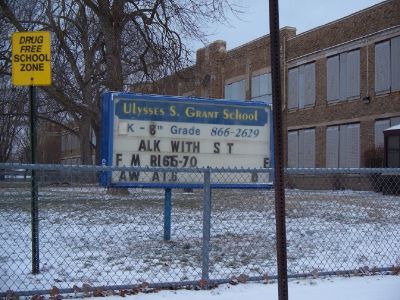Early this month the culmination of community action and advocacy helped save 18 Detroit public schools from the city’s massive school closure and relocation plan. In March, Robert Bobb, who became Emergency Financial Manager of Detroit Public Schools just a year earlier, announced plans to close over 40 school buildings by 2013. Since then Bobb and other DPS officials attended approximately 50 community meetings. Of the meetings, a handful succeeded in removing 18 schools from the chopping block.
The massive school closure efforts were first developed as a means of alleviating the financial deficit of DPS, which by the start of next year could be as much as $332 million. The city’s current Master Facilities Plan will relocate some school programs, cancel others all together and allow the city to close 45 buildings. Pending these closures, Detroit will have closed 100 public schools since 2005. The current list is longer than that of any other school district in the country this year.
The Master Facilities Plan, which outlines what will happen to each of the schools being closed or relocated and why, lists building conditions and declining enrollment, in addition to financial costs, as justification. Declining enrollment is an increasingly pressing issue for DPS because funding is enrollment based. The city’s schools struggle to maintain enrollment despite a loss of students to suburb and charter schools. The building closures will allow the district to funnel more of the Federal Stimulus Funds’ $500.5 million bond issue to build and/or modernize schools into fewer buildings, theoretically getting more for their money. Estimates report the closures scheduled through 2012 will generate an annual savings of $37.67 million and require a one-time closing cost of $30.8 million.
Bobb reminds proponents and opponents alike that in many cases it is the buildings being closed, not the programs. Efforts have been made to relocate successful programs into existing facilities. But schools like Carstens Elementary, one of the handful removed from the closure list, argue that place matters. The financial gains of the closure and relocation plans, they say, do not always outweigh the social impact on surrounding communities. Carstens Elementary, for instance, provides additional services such as dental, vision and health care as well as legal advice for parents. “We are the staple of the community that keeps it alive,” Abby Phelps, who does outreach for Carstens, said in an interview with Michigan Radio. “Without us, it would be dead here.”
Advocates for Carstens Elementary convinced Bobb and DPS to take the school off of the closure list based not on this community element but on Carstens’ outstanding test scores. Over 90% of third and fourth graders passed the MEAP exam, despite the fact that 98% come from low-income families. While academic performance is not listed as reason for closure in the Master Facilities Plan, 11 of the 45 schools listed have some of the lowest test scores in the state, and some schools, like Carstens, were removed from the list based on exceptional success rates.
Other schools cleared the list based on increased enrollment through recruitment drives and additional funding through programs like Focus: HOPE – the results of community involvement and advocacy. In these cases the communities came to the aid of the schools, suggesting mutually supportive relationships. Bobb’s argument that school programs can be relocated into other buildings and be just as, if not more, successful may be true. It is hard to say, however, how neighborhoods that lose their schools – in some cases their staples of community – will fare.




_600_350_80_s_c1.JPEG)











